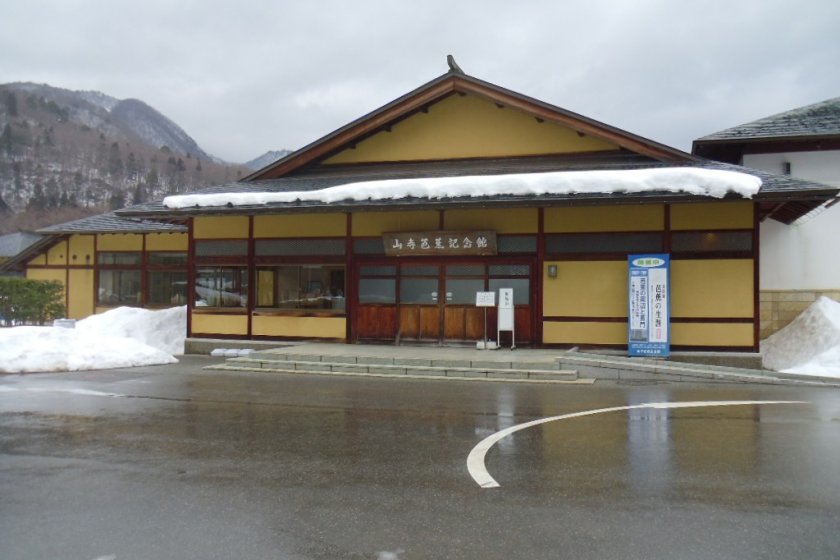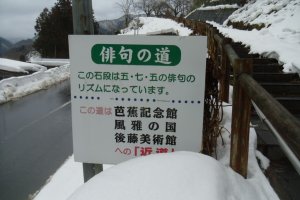You've come to Yamadera for the day. You've climbed up to the temple, eaten soba...now what? Well, if you fancy a bit of culture to go with your exercise, how about learning more about one of Japan's most famous poets? The Basho Memorial Hall is less than 10 minutes' walk from Yamadera Station and features more information in English than a lot of Japanese museums. Matsuo Basho actually spent five months traveling around Tohoku, spending a good amount of time in Yamagata. As a quick side note, for anyone who finds it awkward using Japanese toilets, you're in luck - it also has possibly one of the only Western-style toilets I've found in the area.
The museum is in an area called Fuga no Kuni. To reach it, you climb a series of stairs grouped in the order 5, 7, 5 in an homage to the haiku poetry that Basho was famous for. It seems that there's even an annual English haiku contest in July. I was also amused to find that the lampposts had speakers, and I was serenaded by Japanese music as I walked to the entrance.
The museum building is quite big, also containing study rooms and a tea room. Tea and sweets can be bought for 500 yen, or 450 yen for those who have bought an entry ticket. The entrance is relatively modest – keep walking until you find a car park on your left.
The exhibit area is slightly smaller than I expected, and although there is more information in English than usual, it is still limited. Not all of the exhibits are labeled in English; videos are only in Japanese. Furthermore, for anyone who already knows Basho's biography, there might not be much new information. However, the museum's real attraction is something that can be appreciated without language and would have less effect in a book. The museum displays the beautiful mix of art and calligraphy that is the original presentation of a lot of Basho's work. It's quite delicate and looks as ephemeral as the nature that Basho wrote about; it really expresses emotions of its own and I consider it something worth seeing.
Once you have finished looking round, you can take part in the Japanese tourist tradition of collecting stamps to prove where you've traveled. There are two – one for the museum itself, and one for Yamadera in general.
As for the rest of the Fuga no Kuni area, there is a restaurant and a gift shop nearby. The gift shop sells food and local crafts, which are interesting to browse if nothing else. Just make sure to keep an eye on the time, or you'll be waiting another hour for a train!
































